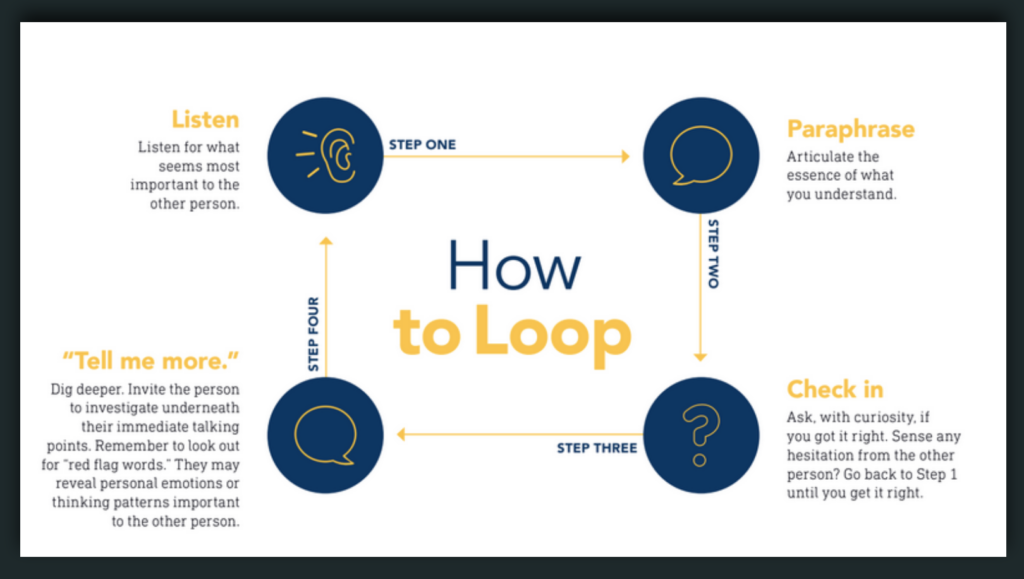Let’s say you could only ask one question of someone you need to accomplish something together with — maybe a teammate, a coworker or a neighbor. Which of the following is more helpful?
“What is your opinion on X?”
Or:
“How did you arrive at your opinion on X?”
The first gives you statements. And it’s not necessarily oriented toward getting a lot of context. The second gives you a story. It may be rich with information, some things you understand and some you don’t. It may leave you wanting to know more.
I love hearing any discussion that mirrors this difference. It is common in the “bridging” space — the nonprofits and researchers trying to help people live together or solve problems across Americans’ many lines of difference.
I also hear it among opinion editors. Across the country, thoughtful editors are seeking more op-eds and contributions that get away from publishing pure “opinion,” which some might read as assertions based on data or perhaps bonafides. They are seeking more first-person storytelling, a recognition that the perspectives people have — critical to civic discourse — are coming from somewhere. And to work together, it’s worth further understanding why.
We heard this all at our API Local News Summit on Opinion, Civic Discourse and Sustainability. For example, bridging group Braver Angels discussed how it comes into play for working across political divides. Megan Finnerty, founder and former director of the Storytellers Project at Gannett/The USA TODAY Network, talked about how stories invite people of different backgrounds into the same conversation. And we also heard about First Person Charlottesville (above), and how collaborations between outlets may be particularly effective for this goal.
Consider this: How might first-person storytelling fit into your reimagining of local opinion journalism — and what does that mean for how you steward resources?
– Kevin Loker, API director of strategic partnerships and research
TRY IT OUT NOW
- Find a vehicle for first-person storytelling. First-person essays (or multimedia) can live among other more standard “opinion” content — or it can have its own brand, accounts or products. Evaluate what will help you reach a wider audience.
- Consider partners. Some outlets or groups speak to different parts of communities most easily. And local news collaboratives are increasingly more common. Can you work together with other news organizations to raise up people’s lived experiences as part of improving civic discourse collectively?
- Consider events. The Storytellers Project is one way in-person storytelling might attract audiences (and revenue). But there may also be smaller, more intimate events that help people share their own stories and build capacity for improving civic discourse locally.
DIG DEEPER
Hélène Biandudi Hofer, a cofounder of Good Conflict, brings community members together to engage in dialogue about contentious topics in a productive manner. Hofer has partnered with news organizations to elevate local voices and issues by focusing on the stories behind people’s stances.
- Lay some ground rules for forum participants. At a gathering hosted by Good Conflict and the Rochester Beacon about the intersection of faith and abortion, participants were told they were not there to debate but to listen, learn and share their stories.
- Encourage the use of a conversation technique called looping. In order to join in and respond to the conversation prompt posed to the group, an individual has to repeat what they had just heard from another group member and check whether their interpretation was accurate.
- Focus on local issues to slow polarization. The Desert Sun in Palm Springs, Calif., stopped running syndicated national columnists for a month in exchange for state and local writers and issues. Compared to another local paper that did not change its opinion content, readers of the Sun reported no rise in polarization, while polarization increased among readers at the other publication.
WHAT OTHERS ARE DOING
- El Tímpano has a regular series, Mi Historia, which are first-person stories sourced through community engagement. They’ve partnered with The Oaklandside (which has its own first-person series) to publish these stories and amplify the voices of Latino and indigenous Mayan immigrants to reach much wider audiences.
- Nonprofit news site Baltimore Banner has run first person pieces in its “Community Voices” section on very local issues, including parking tickets.
Share with your network
You also might be interested in:
Reaching younger audiences has long been a challenge for media organizations. As platforms evolve, trust in news shifts and news avoidance grows, it can feel especially difficult to connect with and serve multigenerational audiences in an authentic and sustainable way. How can news leaders do their part to represent and include community perspectives from members of different age groups?
For us, we knew one of our biggest hurdles to success would be challenging the assumptions, both spoken and unspoken, we held for others. Here’s what we’ve learned over the past three years of gathering multigenerational problem-solvers.
Generational tension has always existed, of course, but today it is amplified by several factors, both in our communities and our newsrooms. We asked five summit participants to share more about the ways they are engaging and serving multigenerational audiences.



